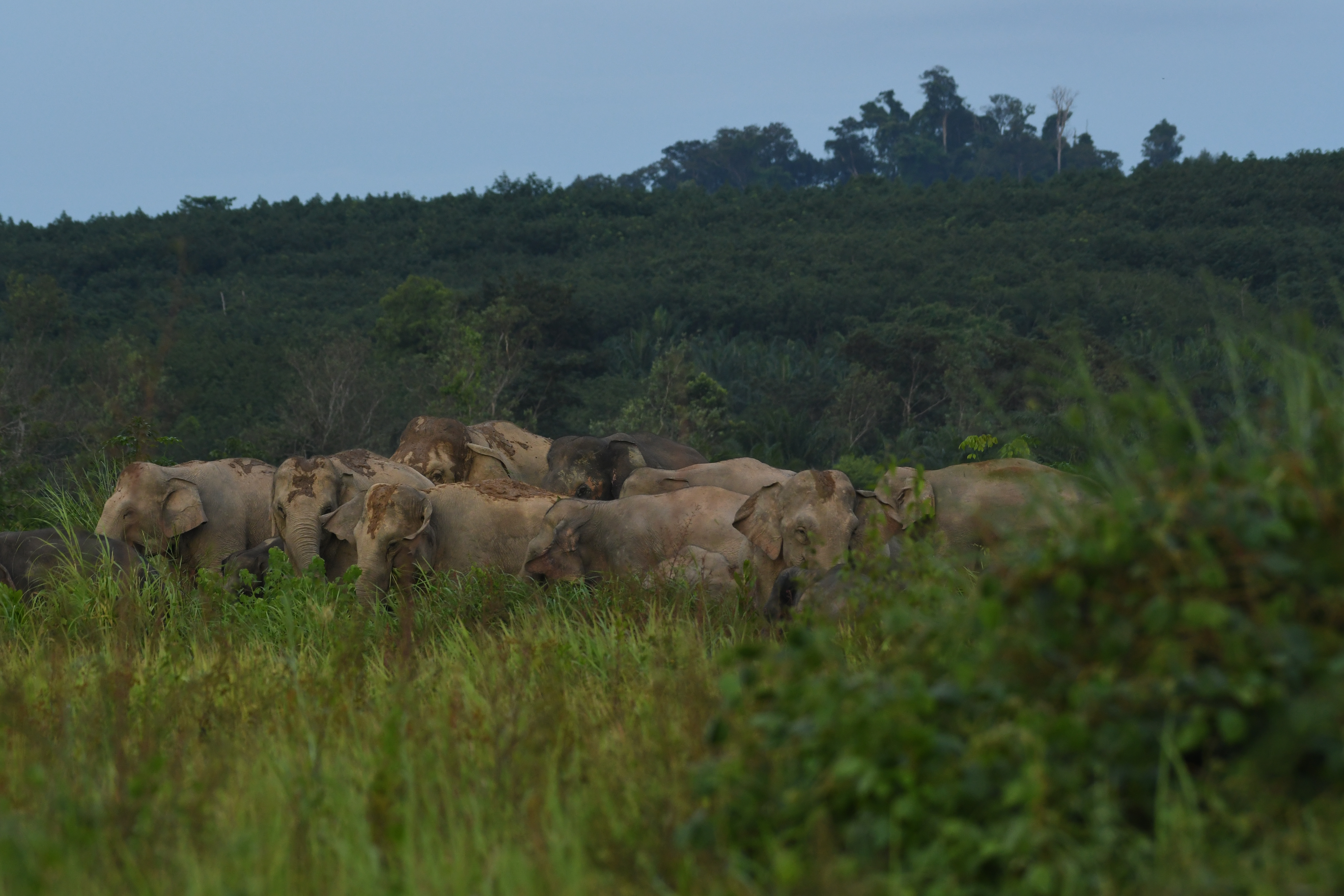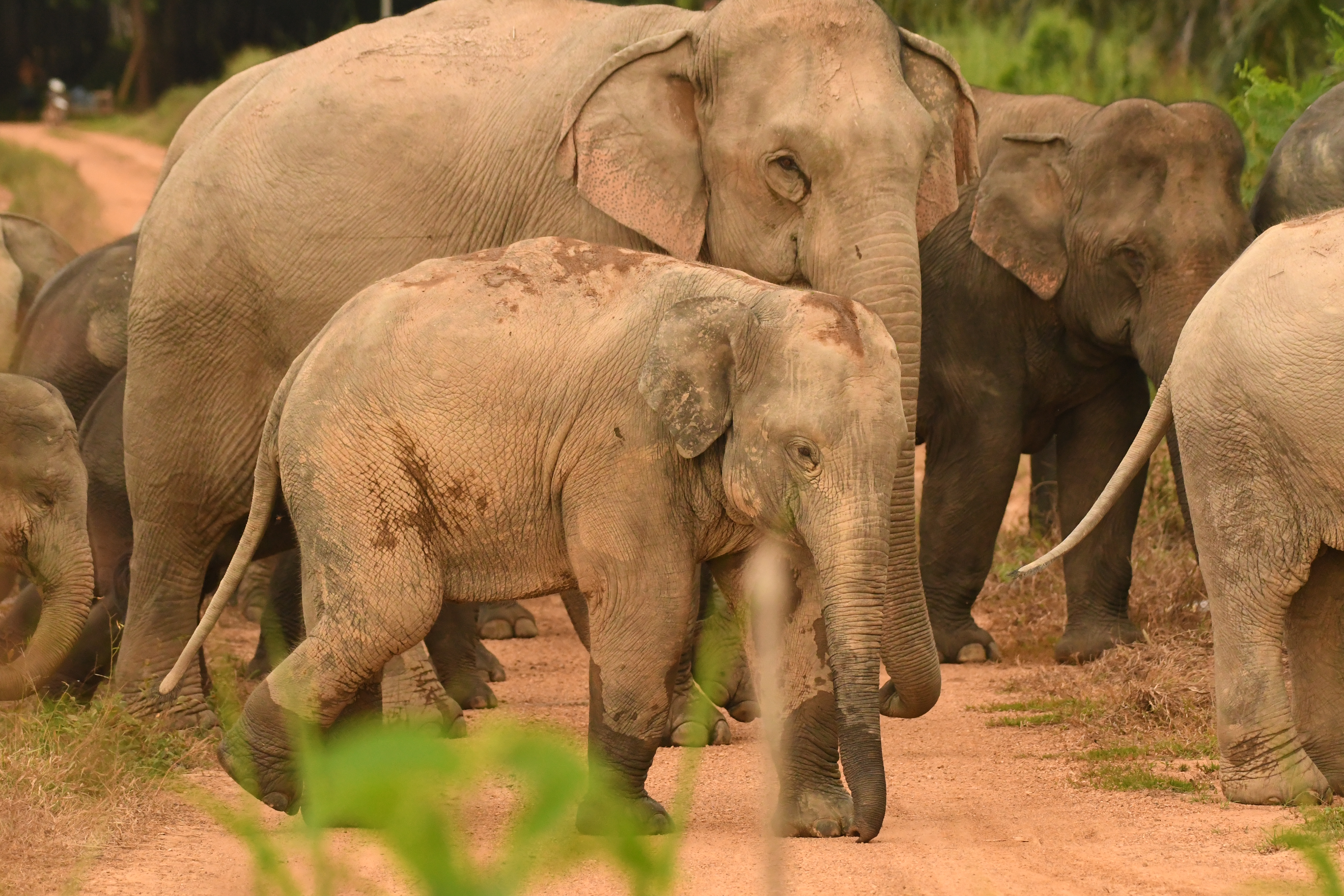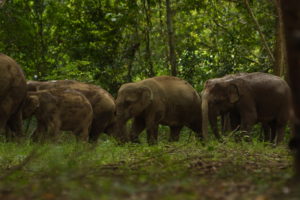Human Elephant conflict in Thailand’s Chanthaburi province
Massive Hec problems getting out of control?

More than 100 wild elephants from Khao Ang Rue Nai wildlife sanctuary and other protected areas around Kaeng Hang Meow district
have left their natural habitat. For many years now, these elephants refuse to go back inside their protected areas.

Construction of a dam seemed to have eased the problems, as the elephant had adopted the lake area as their new home with plenty
of food and water.
On September 10. a big herd of around 80 elephants again left this area and went in the direction of Phawa sub-district.

Frantic efforts by rangers from Khao Ang Rue Nai, supported by a large number of volunteers, to stop them and drive them back, have failed so far.
Welcome to the world of dispersing elephants! This is an altogether different challenge from the regular human elephant conflict. However, these elephants are giving you a quick lesson in the challenges they can pose in the short and long term. Something that took me 20 years to learn because the elephants here were far more miserly with their lessons 🙂 . 1) They move out because of some problem in their original home range (severe disturbance, habitat fragmentation/loss/degradation or local overabundance) 2) They are in search of a new home (habitat) but in the process of movement if they transit or stay in largely human use areas with small patches of forest and become dependent on crops then they can become habitual crop raider and gradually lose their fear of crop raiding and of people (you then have a more serious problem) 3) It can also result in them treating human use areas as natural habitats and then not restricting themselves to forests even when they are large patches 4) They respond to habitat/climatic changes in the new area as also to human actions, which means that anything unsuitable for a given period of time will result in further exploratory movement as you see in this case. 5) Drives will bring temporary relief and even if they appear to succeed they may result in these elephants popping up somewhere completely new (from another part of the forest). 5) Social dominance hierarchies will generally not allow them to use new habitats which already have elephants and even if they do enter such areas they will be confined to some periphery and cause significant problem.
Solution – If you are very lucky they will find a suitable forest area and learn to settle there but in places like India and Sri Lanka we do not have such empty areas. if not then 1) best is not allow the problem to start by better managing existing ranges and populations 2) Confine them physically (barriers) to some large habitat area (300 – 500 km2 or more the better) and manage them intensively. Then go back to the original area (if known – they can come from anywhere within that landscape) and check to see what was the triggering factor and correct that so that you do not get more dispersal from that area.
Tall order I agree but this is the only way out other than capture (what to do with so many – such groups show the limits of such actions; culling – not acceptable most will say or managed extinction i.e. stop breeding by removing males or using immuno-contraception and wait for the group to gradually die out – that is 50 to 60 years or more of sustained conflict and management. Not too many choices. Or indulge in pointless action – keep chasing them around, appease local resentment by compensation, drives and occasional capture. And eventually retaliatory killing, stress, etc will decimate their number over a long period of time.
Hi Ajay,
thanks for your reply.
This herd stays outside their home range for many years now, but for a year the stayed at the newly built dam/lake area and actually migrating back into the protected area during daytime.
before, they went up to 60 km from the protected area with terrible consequences.
i have been there the last few weeks and saw the sudden switch first hand. there was no disturbance whatsoever only reason could be the slow rising level of water in the lake. As we had rain during night times, we have not been able to block them or drive them back. We need to see if this is a short excursion or a 3 year trip again.
Andy
From what I have seen in multiple dispersal movement – it is difficult to figure out the initial location of the group unless the area and population are small. They could travel through the forest and then come out at some location and we would then have no clue where they originated. Anyway once they have started to move then as I said they are seeking alternate habitat (for whatever reason) and they will then explore new areas and test them by settling in. Depending on the degree of movement though human use areas their behavior changes and with that their idea of a suitable area. However, once they start to try settling in an area they will respond to environmental cue and also to human activities and keep adjusting. If they find something that is not suitable or which changes and they do not like that they will respond by expanding existing range or disperse again. What the drivers of such movement are or what exactly is the triggering agent we have no clue (other than the human angle in some cases). So it is extremely difficult to predict anything. I have seen gradual changes in ranges, sudden shifts after over 20 years of apparent stability, so very difficult to predict. And very difficult to manage, yet to see one managed effectively – in most cases the approach is just ad hoc dealing with the crisis. No policy or clear goal and a plan to attain the goal recognizing the behaviors and issues I mentioned. Anyway – wish you and all those dealing with this rather difficult problem the very best. – Ajay Desai